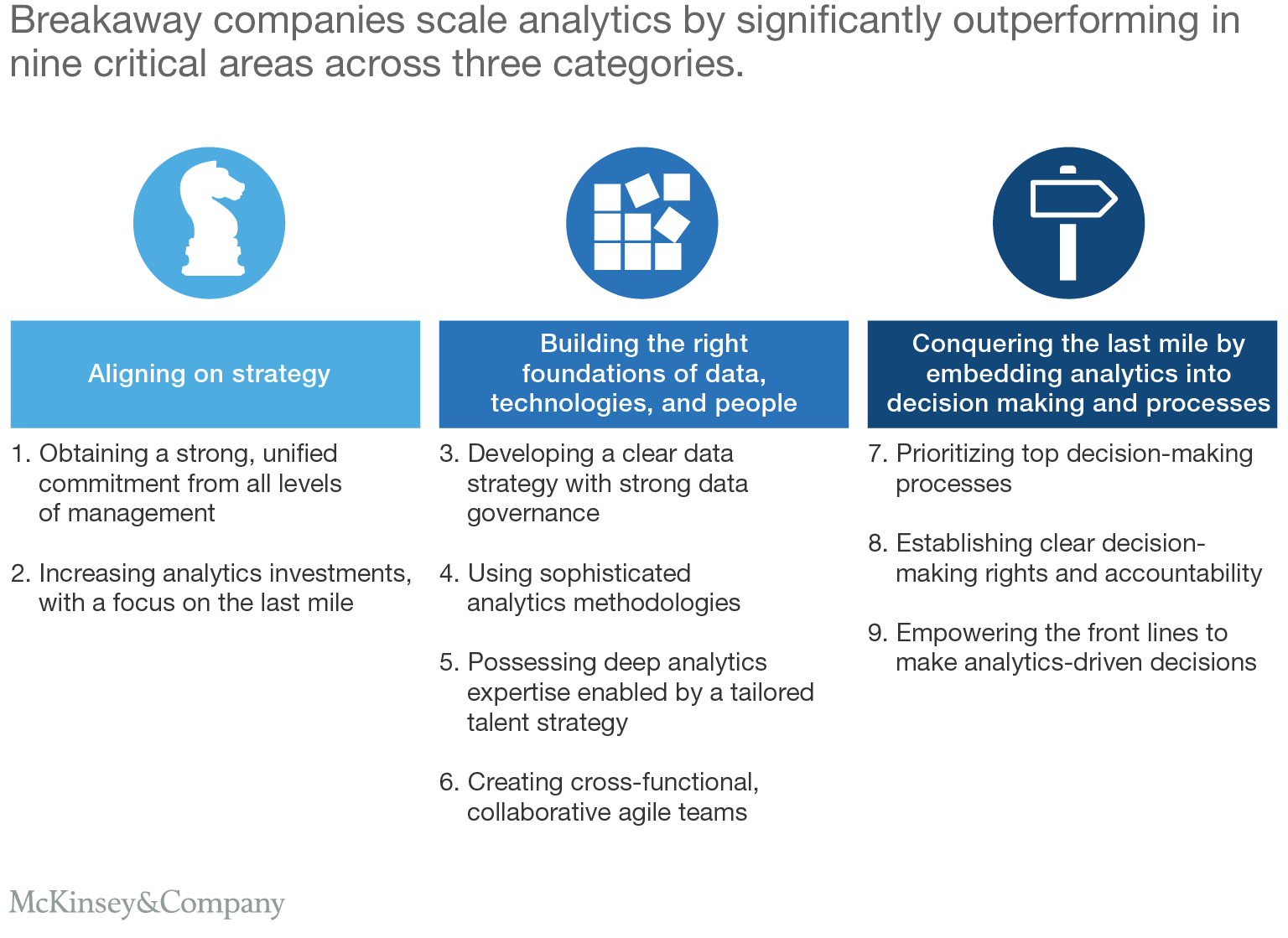 Here is a brief excerpt from an article written by Peter Bisson, Bryce Hall, Brian McCarthy, and Khaled Rifai for the McKinsey Quarterly, published by McKinsey & Company. To read the complete article, check out other resources, learn more about the firm, obtain subscription information, and register to receive email alerts, please click here.
Here is a brief excerpt from an article written by Peter Bisson, Bryce Hall, Brian McCarthy, and Khaled Rifai for the McKinsey Quarterly, published by McKinsey & Company. To read the complete article, check out other resources, learn more about the firm, obtain subscription information, and register to receive email alerts, please click here.
To learn more about the McKinsey Quarterly, please click here.
* * *
A handful of the world’s companies have cracked the code on embedding analytics into every layer of their organizations.
The time for simple experimentation with analytics is over—and most companies know it. Across industries, we see organizations investing heavily to integrate analytics throughout their entire business in an effort to capture a portion of the $9.5 trillion to $15.4 trillion of value that the McKinsey Global Institute estimates advanced analytics can enable across industries globally.
Despite this investment, senior executives tell us that their companies are struggling to capture real value. The reason: while they’re eking out small gains from a few use cases, they’re failing to embed analytics into all areas of the organization.
However, in a recent McKinsey Analytics survey of 1,000 companies with more than $1 billion in revenue and spanning 13 sectors and 12 geographies, we identified an elite group of companies that is achieving the elusive goal of analytics at scale.
What does analytics at scale look like? One major US retailer responded to fast-changing consumer behaviors and fierce online competition by reshaping its entire business around analytics. A state-of-the-art analytics capability would span all eight of its business units, all six of its major operational functions, and all 60 million of its customers.
The results have been impressive. The new capability aggregates all customer interactions and extensive customer information across brands and channels, enabling the company’s analytics teams to target offers to customers at a microsegment level. And the impact truly spans the organization. In marketing, for example, the company can deliver personalized content through its website, emails, and digital ads. In strategic planning, the capability pinpoints neighborhoods where people make the most online and catalog purchases in order to identify the most promising future store locations.
However, getting to that point wasn’t easy. The company had to overcome many challenges, including the toughest of all—bridging the “last mile,” or delivering the right insights to the right people at the right time in a way that informs their decision making to drive better business outcomes.
To achieve similar success in scaling analytics, organizations can look to the practices of the 8 percent of companies in our survey that are breaking away from the pack. Based on our research, there are nine critical drivers of these breakaway companies’ relative success at scaling analytics (Exhibit 1). (See sidebar, “About the research,” for more on the study methodology.) These drivers fall into three main categories: strategy, foundational capabilities, and activities geared toward the last mile of embedding analytics into the fabric of the organization.

What surprised us was not necessarily the small size of this breakaway group or even their practices but how wide the divide was between them and the rest of the pack.
* * *
Here is a direct link to the complete article.
Peter Bisson is a senior advisor in McKinsey’s Stamford office; Bryce Hall is an associate partner in the Washington, DC, office; Brian McCarthy is a partner in the Atlanta office; and Khaled Rifai is a partner in the New York office.
The authors wish to thank Nila Bhattacharyya, Laura DeLallo, Clarice Lee, and John Saunders for their contributions to this article.